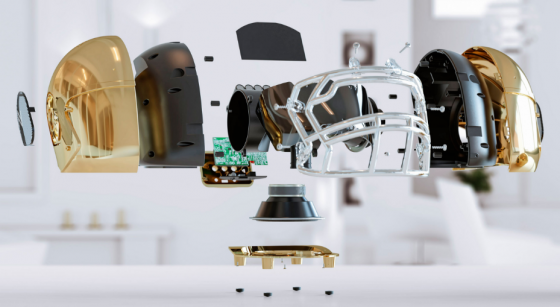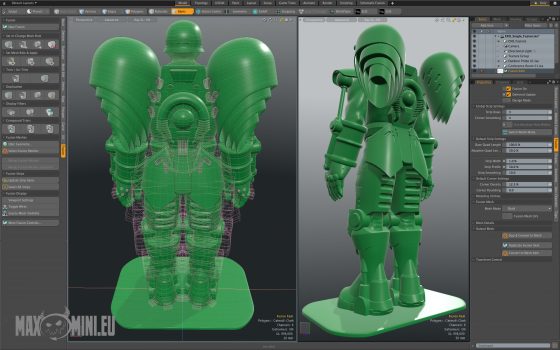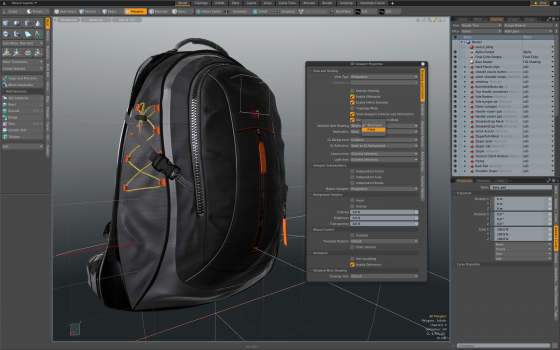Modo has long been popular with both media creatives and product designers for its respect of the underlying geometry.
The Foundry has made considerable revision to the MeshFusion technology in Modo, replacing its older schematic-based workflow with more modern direct input. The revision is one of several changes just released as Modo 10.2.
Modo is 3D creative modeling software that has found popularity with both the digital content artistic community and product designers.

The Foundry says the changes in MeshFusion make it “even easier to cut, combine and intersect geometry.” The tool now automatically launches and reorders a model’s underlying tree structure whenever an edit is made.
Other new features in Modo 10.2 include:
Automatic retopology — Creating quad meshes at any density is now automatic, removing the need for manual cleaning. The meshes will not only follow the curvature of an input surface, but can be controlled by weight maps and sketched guide curves, increasing artistic input whenever they want to creatively refine assets.
Procedural modeling enhancements — Users now have the ability to package, share and reuse assembly aliases, turning what can often be a complex set of mesh operations into a single item that users can share as presets. Slicing, drilling, cloning and duplicating tools have also been added/updated, bringing more production standards into the procedural modeling workflow.
Deformer caching — Deformations and mesh operations can now be cached and held in memory, so artists working on complex animations can scrub the timeline faster.

Rendering enhancements — The Preview Renderer and Advanced Viewport have received performance improvements; while the new ability to use arbitrary meshes as light sources offers a new lighting workflow that can more easily represent difficult shapes such as filament bulbs.






